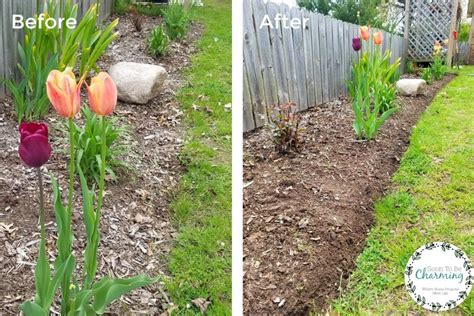Flower Bed Cleanup: Simple & Effective Techniques
Spring has sprung, and with it comes the joyous task of reviving your flower beds after a long winter. A thorough cleanup not only enhances the aesthetic appeal of your garden but also sets the stage for a vibrant and healthy growing season. This guide provides simple yet effective techniques to ensure your flower beds are ready to bloom.
What Tools Do I Need for Flower Bed Cleanup?
Before diving in, gather the necessary tools. Having everything at hand streamlines the process and prevents frustrating interruptions. You'll likely need:
- Gloves: Protect your hands from thorns, dirt, and potential irritants.
- Trowel or gardening fork: For loosening soil and removing weeds.
- Pruning shears or hand clippers: For trimming dead or damaged stems and branches.
- Rake: To gather debris and level the soil.
- Wheelbarrow or garden cart: For transporting collected materials.
- Garbage bags or compost bin: For disposal or composting of waste.
- Garden hose: For watering after cleanup (optional).
How Do I Clean Up My Flower Beds in the Spring? A Step-by-Step Guide
Cleaning up your flower beds involves a systematic approach. Here's a step-by-step guide:
-
Clear the Debris: Begin by removing any fallen leaves, twigs, and other debris accumulated over the winter. Use a rake to gather larger pieces, and carefully pick up smaller debris by hand.
-
Remove Dead Plants: Identify and remove any dead or diseased plants. Cut them back to ground level using pruning shears. This prevents the spread of disease and frees up space for new growth.
-
Weed Removal: This is crucial for healthy flower beds. Carefully remove weeds by hand, using a trowel or gardening fork to loosen their roots. Pay close attention to persistent weeds like dandelions and bindweed.
-
Loosen the Soil: Gently loosen the top layer of soil using a trowel or gardening fork. This improves aeration and drainage, making it easier for your plants to establish roots. Be careful not to damage any existing plant roots.
-
Add Compost or Mulch (Optional): Enriching your soil with compost or mulch improves its fertility and helps retain moisture. Spread a layer of compost or mulch evenly over the flower bed.
-
Water Thoroughly (Optional): After cleanup, water the flower beds thoroughly, especially if the soil is dry. This helps settle the soil and encourages new growth.
What Should I Do With the Debris and Dead Plants?
Proper disposal of garden waste is essential. Here are some options:
-
Composting: Many garden wastes, such as leaves, twigs, and healthy plant material, can be composted. This creates nutrient-rich soil amendment for future use.
-
Discarding: Dispose of diseased plants in sealed garbage bags to prevent the spread of disease. Never compost diseased plants.
How Often Should I Clean My Flower Beds?
The frequency of flower bed cleanup depends on factors like the type of plants, the climate, and the amount of leaf litter. However, a thorough spring cleanup is essential for most gardens. Light maintenance, such as removing weeds and deadheading spent blooms, should be done regularly throughout the growing season.
What are Some Tips for Maintaining Healthy Flower Beds Throughout the Year?
Maintaining healthy flower beds is an ongoing process. Here are some helpful tips:
- Regular weeding: Keep on top of weeds to prevent them from competing with your flowers for resources.
- Deadheading: Regularly remove spent blooms to encourage more flowering.
- Watering: Provide consistent watering, especially during dry periods.
- Fertilizing: Feed your plants with appropriate fertilizer to promote healthy growth.
- Mulching: Mulch helps retain moisture, suppress weeds, and regulate soil temperature.
By following these simple yet effective techniques, you can ensure your flower beds remain vibrant, healthy, and beautiful throughout the year. Remember that proper planning and consistent maintenance are key to a thriving garden.

